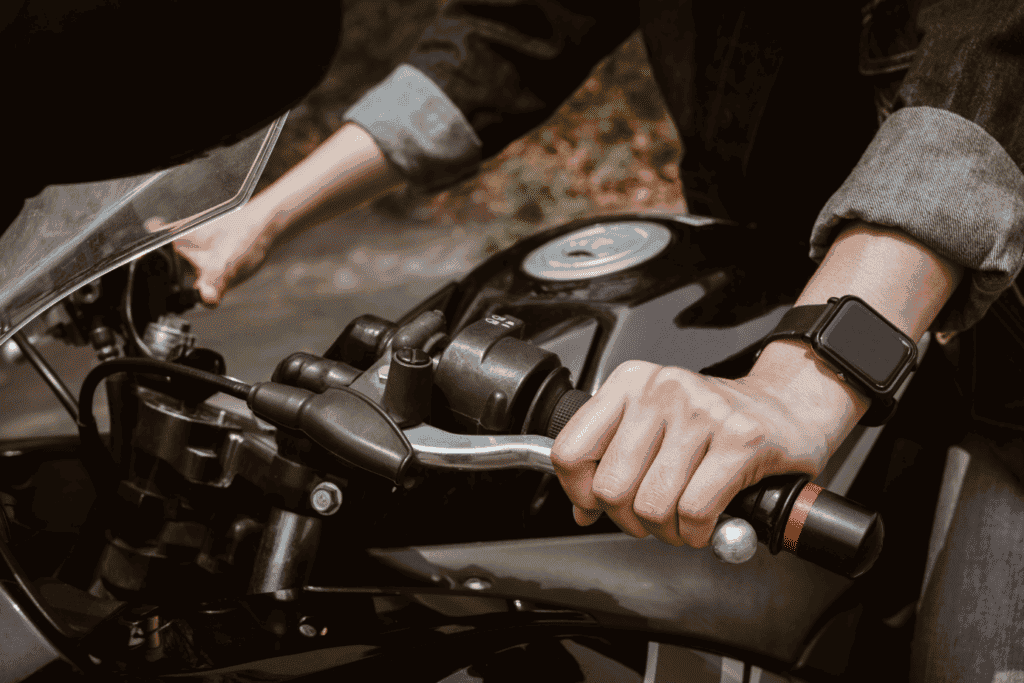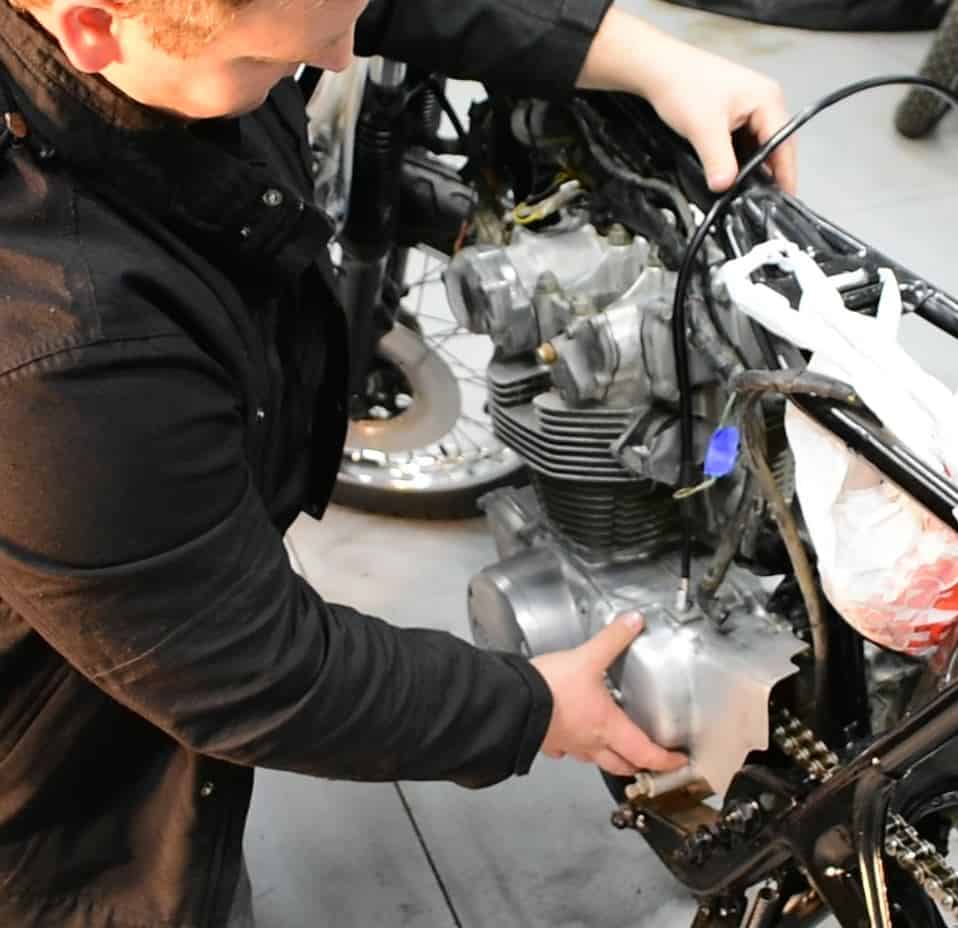
You may suddenly notice as you are riding your motorcycle around at high rpms, the clutch starts to slip. Not only is this annoying, but it can also be dangerous. It may take some skill to mange yourself around this and even as a seasoned rider, you may not know how to do that.
Why is my motorcycle clutch slipping at high RPM? A motorcycle clutch slips at high RPM because of worn clutch plates, too much oil on the clutch plates (for a dry clutch), bad clutch springs, or a faulty clutch cable. Aggressive riding and holding in the clutch too much can exacerbate these issues.
Just like any other mechanical component, things wear over time. This can lead to your clutch slipping at high rpms. This means that your clutch may be unable to hold you in to the current gear while riding. Essentially, the gear “slips” out. This is almost always a result of worn components. If you ride your motorcycle very aggressively, this can accelerate the wear on your clutch and other components leading to slipping occurring even sooner. Let’s dive in to this a little further.
Why Your Clutch Is Slipping At High RPM
Using your clutch is a daily action when riding a motorcycle. Anytime you want to shift gears, you use the clutch to disconnect the engine temporarily from the transmission so that the transmission can be safely moved into another gear before being reconnected to the engine. This is exactly what your clutch is designed to do, and it does a great job at that.
Holding in the clutch lever essentially does the same thing as when you put your motorcycle into neutral. The bike is able to freely and easily roll as the transmission is decoupled from the engine. Each time that your clutch is pulled, the motorcycle is essentially put in a temporary neutral and then engages once you release the clutch lever. This is what makes driving possible. Otherwise, you would be limited to a single gear on your motorcycle.
So, what could be the cause of your clutch to slip? The very first most common thing is worn clutch plates. Your clutch plates will slowly wear out over time due to the friction they are exposed to. As a result of the friction, the clutch plates can also get very hot which can cause them to wear faster. If the clutch plates get very thin, or if they get warped at all, they may not be able to adequately keep your transmission in gear anymore and the clutch will slip.
Do keep in mind that just because your clutch slips, that doesn’t necessarily mean that it’s a result of your clutch plates getting worn out. This could also happen due to the clutch springs. The clutch springs are what press the clutch plates together. Over time, the springs can wear from use or from being exposed to the elements. This can cause them to slowly lose their tension. As a result, they may not be able to keep the clutch plates together under a heavy load such as high rpms or heavy acceleration. This can cause your clutch to slip.
You could have a brand-new clutch (not worn at all) and still have a slipping clutch. What would be the cause of that? This could be a result of oil on the actual clutch plates. To be clear, some clutch plates require oil as a cooling system; these are referred to as “wet clutches.” Ensure that your clutch is supposed to be a “dry clutch” before deeming this your slipping issue.
If oil seeps down onto the clutch plates, it can cause the clutch plates to slip on each other. You can lose all of the friction that your clutch relies on to function properly. Regardless of whether your clutch is brand new or very old, oil can cause it to slip, so it’s worth checking to ensure our clutch isn’t covered in oil.
The last main cause of a slipping clutch would be due to the clutch cable itself. Your clutch cable is used to engage and disengage the clutch on your motorcycle as you pull the lever. If the cable isn’t adjusted properly, then you might not actually disengage or engage the clutch when it should even if you have the lever pulled or released properly. This can cause your clutch to slip. So, if your clutch is not excessively worn, and has no oil on it, the issue is likely your clutch cable. Be sure that it is adjusted properly and not damaged.
If you are experiencing slippage issues, these components are the first things I would check. You will never know for sure until you have inspected your bike thoroughly.
Is It Dangerous If The Clutch Slips At High RPM?
You might be wondering if it’s dangerous if your clutch slips, especially at high RPM. In a lot of cases, if your clutch slips for a second, that won’t really put you in any danger but it definitely can be in the wrong situation. There are several reasons for this.
First off, while slipping, you will lose power. This means that you won’t be able to accelerate or provide throttle. This means that if you need to give your motorcycle any throttle to get out of a situation, you won’t be able to. In most cases, this won’t be a huge deal but if you suddenly need to avoid something or get past something and your clutch slips, you will find yourself in an unlucky spot.
The sudden shift from being in gear and out of gear can also cause your bikes handling to become somewhat unpredictable. This is something that you as a rider must react to and be able to handle. If your clutch is bouncing back and forth between engaged and disengaged, this can cause your bike to jerk back and forth which can be dangerous.
How To Fix a Slipping Clutch At High RPM

So, if your clutch is slipping at high rpms, what can you do? First off, you need to diagnose your motorcycle and figure out the cause of the slippage. You cannot fix anything until you know why it is happening. This will require you to take a look at the clutch itself and all other clutch related components.
Of the issues that we talked about, some were due to worn clutch components. These could be worn clutch plates, worn clutch springs, or other clutch components. If your diagnosis leads you to the conclusion that any of the clutch components are worn, the solution is to change them out. These are usually parts that you cannot fix, they just need to be replaced.
You can purchase a new clutch relatively cheaply which will allow you to replace the entire thing altogether. Odds are, if one component is excessively worn, likely all of the components are starting to show signs of wear. Replacing the clutch can get your motorcycle running like new again.
If the reason that your clutch is slipping is due to oil on the clutch, then the solution is fairly simple. Again, ensure that your clutch is a “dry clutch” before proceeding. If the oil got on there from a leak in the engine or somewhere else, you will also need to fix that leak first. Otherwise, your clutch will end up getting oily again quickly. Finding the oil leak and repairing it is crucial to ensuring that your clutch keeps working like it should. Many have found that soaking the clutch plates in brake cleaner will ensure a good clean and gets all of the oil off.
If the issue is related to your clutch cable, it’s generally just a matter of ensuring that the clutch cable is adjusted properly. You will want to adjust it and then make sure that the clutch fully engages and disengages as it should. If the cable is just excessively worn and has lost some tension, then you may need to replace the clutch cable entirely.
How To Prevent A Slipping Clutch From Happening Again In The Future
So, what can you do to prevent your clutch from slipping in the first place? First off, many of the causes of a worn clutch are the result of worn components. There is no way to stop components from wearing out entirely. Any mechanical component will slowly deteriorate over time. While you may not be able to stop your clutch from wearing out, you can help your clutch laster longer by taking proper care of it.
Aggressive riding can cause your clutch to wear much faster than normal. The hard shifts and hard accelerations put extra stress on the clutch and cause excessive wear. So, by not riding so aggressively, you can help your clutch to last longer. This doesn’t mean that you can never drive hard; accelerating or shifting hard sometimes isn’t going to destroy your clutch. Consistent hard riding will cause wear over time though.
The second thing that you can do is ensure that your clutch habits are acceptable when riding. This means making sure that you aren’t riding the clutch excessively or leaving the clutch slightly engaged while riding.
